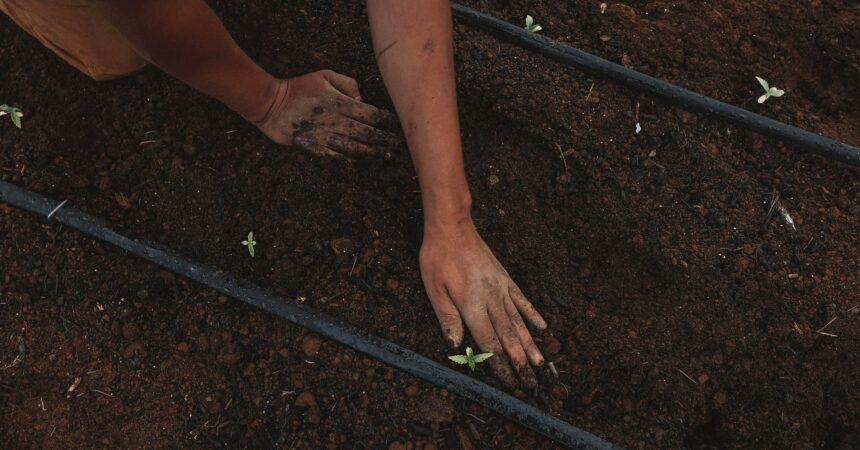Does grow method play a factor in profitability for cannabis farmers?

By Savannah McClelland
As cannabis farming becomes an increasingly lucrative industry, enterprising individuals have many options available when choosing a grow method. Indoor, outdoor, greenhouse, hoop house — the legal market has provided many environments for cannabis to be grown.
One of the key questions buyers interested in a farmers product may have is whether one method yields a better quality product than another, and if there’s a difference, how pronounced is it? According to professional cannabis graders, environment can play a strong role in the finished product.
THE BEST ENVIRONMENT DEPENDS ON LOCATION
According to data from graders with Big Tree, ecological environment does play a role in which grow method is the best option. Big Tree's graders travel around several different operations in Washington State to grade and appraise cannabis, giving them a great deal of experience comparing and contrasting the effects of different growing environments.
One grader says, “I know that in different parts of the country or world you can achieve some high-quality cannabis outdoors that might even rival some indoor flower. As for Washington though, the difference in quality is noticeable. We also see this play out in pricing on the wholesale market.”
In their experience, outdoor grow operations in Washington tend to produce lower quality (and therefore lower price) cannabis, while the best product tends to come from indoor operations. “Starting from lowest-priced A-Flower to highest, it would go as follows — outdoor, hoop house, light deprivation (or light dep) hoop house, greenhouse, light supplement (or light sup) greenhouse and then entirely indoor environments.”

Light deprivation and light supplementation environments involve growers using different methods (either supplementary grow lights or black plastic sheeting) to control the plants’ exposure to light. In the case of light dep, this is achieved by restricting the schedule to 12 hours of light during times of year that have longer daylight periods, and with light sup, by using HID lights when there isn’t as much sun.
Big Tree notes that the light sup greenhouse environment is particularly interesting. One grader says, “I have seen a few grows that are a steel and concrete building, but they have a glass roof that they can let the sunshine through or block it out and just use the lights. They can also control the humidity and temperature of the grow room just like an indoor grow. Some of these growers are producing flower that can go for just as high of a price as some indoor flower.”
CONSISTENCY AND QUALITY GO TOGETHER
An important factor in quality that tends to go along with indoor growing environments is the ability to keep the environment consistent. In regards to Washington state, Big Tree reports that, “outdoor flower grown here can range all over the quality spectrum due to the many different environments. Outdoor flower tends to have thicker stalks and leaves. It does not usually produce the nose and trichome production we see from other grow environments.”
They also note that with greater control over various growing factors, the quality tends to go up.
“You get a little more control over the growing conditions and can start to push the flower to achieve higher quality. Since rain and wind are less of a factor, these environments are more consistent.”

It is this consistency that really favors indoor growing environments, where growers can eliminate the unpredictability of the outside world. From wind to rain to humidity and available hours of sunlight — it becomes easier to consistently produce a higher quality flower when these factors are controlled.
The most consistent, when done correctly, is indoor grown. This is mainly due to the fact that you can dial in the environment and control almost all aspects of the plant’s grow cycle. You can also do this all year long and are not reliant on the weather for high quality results.
ENVIRONMENT IS IMPORTANT BUT IT’S NOT THE ONLY FACTOR
Another major factor when it comes to the finished quality of the flower is consistency at all levels of the operation. Indoor environments tend to produce better quality flower only when done properly — an indoor environment all on its own isn’t a guarantee. Then, too, there is the fact that while the environment is important, there are other aspects to consider as well. Genetics and the process of drying and curing the cannabis both play major roles in the final quality and grading.
One Big Tree grader explains that “while you do need a solid foundation in genetics, and a consistent environment, those two factors will not shine through if the flower is not dried and cured properly. I have seen flower that while hitting high marks on genetics and environment, did not end up as high quality flower due to poor drying and curing conditions. It may look great in the field or in the grow room, but if the same attention to detail is not paid during these last two phases, the flower will not be considered high quality.”

The world’s 1st third-party cannabis and hemp quality verification, grading, appraisal and certification service.
